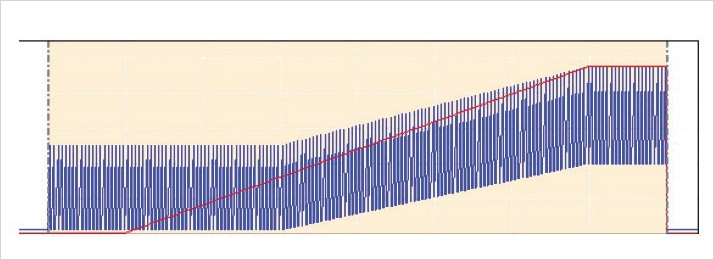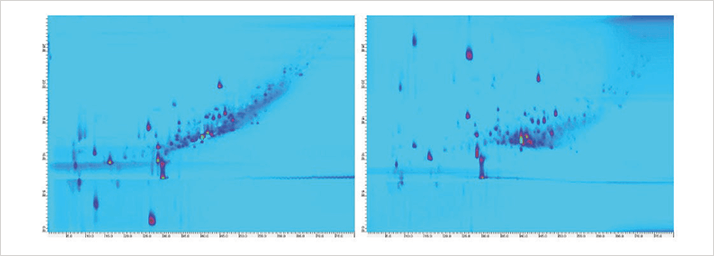Introduction
Chinese herbal medicine (CHM) is one aspect of traditional Chinese medicine (TCM) and uses single plants or preparations of several plants. The effectiveness of CHM depends on the synergistic effects of multiple components in the plants. The plants used in CHM present extremely complex samples. Therefore, comprehensive twodimensional liquid chromatography (comprehensive 2D-LC) is the method of choice for their analysis.Results and Discussion
For comprehensive 2D-LC analysis, samples of the plants were prepared as decoctions. It can be expected that decoctions of plants used in CHM contain a range of very polar compounds besides many less polar compounds. For this reason, an Agilent ZORBAX SB-Aq column was chosen for the first-dimension separation because it retains hydrophilic compounds and can be run under 100% aqueous conditions. Further, methanol showed better separation for the ingredients of mori ramulus, as well as adding 0.1% formic acid to both eluents. The gradient was run from 0 to 95% methanol over a duration of 80 minutes.To choose the right column for the second dimension, several columns were tested whereby an Agilent ZORBAX Bonus-RP column provided the best separation for the fast gradients. Selectivity differences between the first and second dimension separation were achieved by using acetonitrile as eluent and by adding 0.1 % formic acid to both eluents. Besides this better orthogonality of both dimensions, using acetonitrile was also advantageous because of the lower back-pressure generated compared to methanol. Hence, higher flow rates could be deployed in the second dimension. To enlarge the accessible two-dimensional separation space, a shifted gradient was applied in the second dimension as shown in Figure 1. The highly orthogonal separation is shown in Figure 2.






